Our Australian Waler Horse Training Methods
“You cannot train a horse with shouts and expect it to respond to a whisper”
Our training methods are best described as ‘classical’. We follow the old classical dressage masters, such as Egon Von Neindorff, Nuno Oliveira, Alois Podhajsky, and some of the more classical show jumping trainers, such as Anthony Paalman. The Australian Waler horse responds very well to these methods. The variety of methods we use are always in the horse’s best interests and allow for gentle progressive training that does not involve fear or force. As Nuno Oliveira would say: “Proceed so that the horse finds himself willingly into the exercise, and not by force”. Each Australian Waler horse is handled and trained according to its personality, capacity, and natural abilities, and we adjust our training to suit the individual horse.
The Australian Waler horse is given extensive training in basics on the ground even before a rider sets foot in the saddle, basic ground manners are essential. We are gentle with teaching it the manners of life, and always consistent. The Australian Waler horse is taught to in hand to back up, turn around the forehand, side pass, and shoulder in. It is taught to stand square and walk and trot in hand. These exercises are essential in producing horses ‘light to the hand’ and with muscles conditioned to carry a rider, from the most confident of stallions to the timidest of mares.
The Australian Waler Horse is taught to lunge correctly, to both sides, and to walk, trot, canter and halt on command on the lunge. Once they are confident on the lunge, they are taught to lunge with a Chambon to encourage a frame suitable for carrying a rider. It is also taught free lunging to increase its confidence and its reliance on handler body language.
Our horses are mouthed in the lightest and most responsive way on the ground. On the ground, each is gently taught full and responsive neck flexing, to release down to the ground (‘loose’ and ‘long’ rein aids), to flex inwards and ‘follow the bit’ – forward, up, down… Each horse fully accepts and is responsive to the bit before a rider steps aboard. They are also trained in a halter and bitless bridle to increase their responsiveness and versatility.
Once the horse is accustomed to the bit and saddle, all ground basics are repeated in the early training at the halt and walk. This produces Australian Waler horses that are very responsive, and ready to move onto more serious training because they are conditioned in their muscles and already have a clear understanding of the rider’s language.
We believe the horse is made before the horse even trots with a rider onboard. Our foundation is built on trust and lightness, light to the hand, and light to the leg. Our young horses respond to whispers.
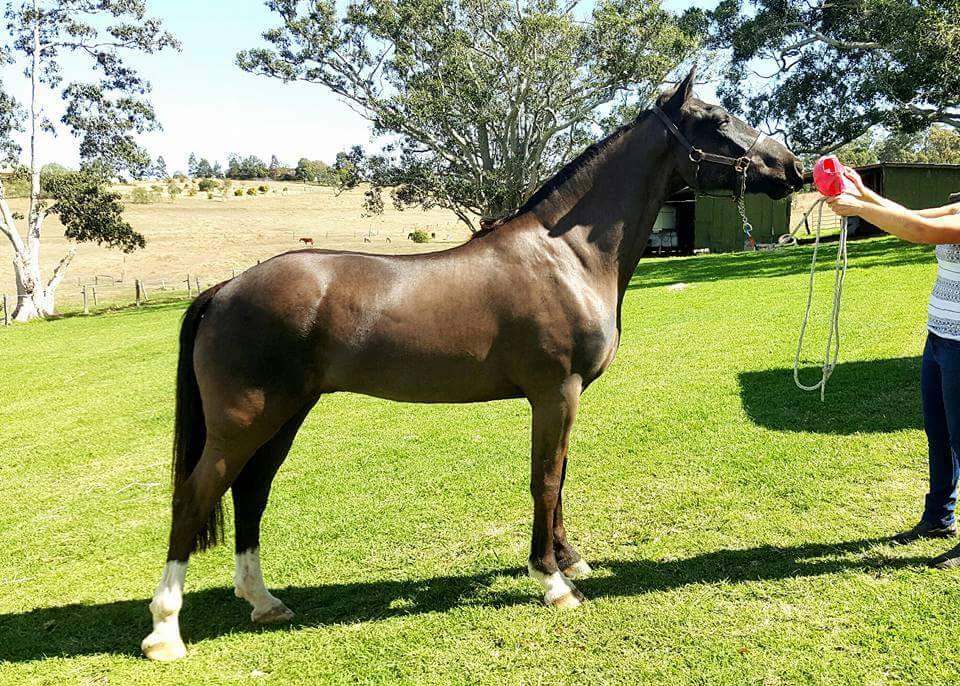
Pinnacle Madiba, also pictured below as a tiny foal, now rising 3, and trained to halter. Though he is not a Waler, he represents well the excellent quality and great-natured youngstock that we breed.
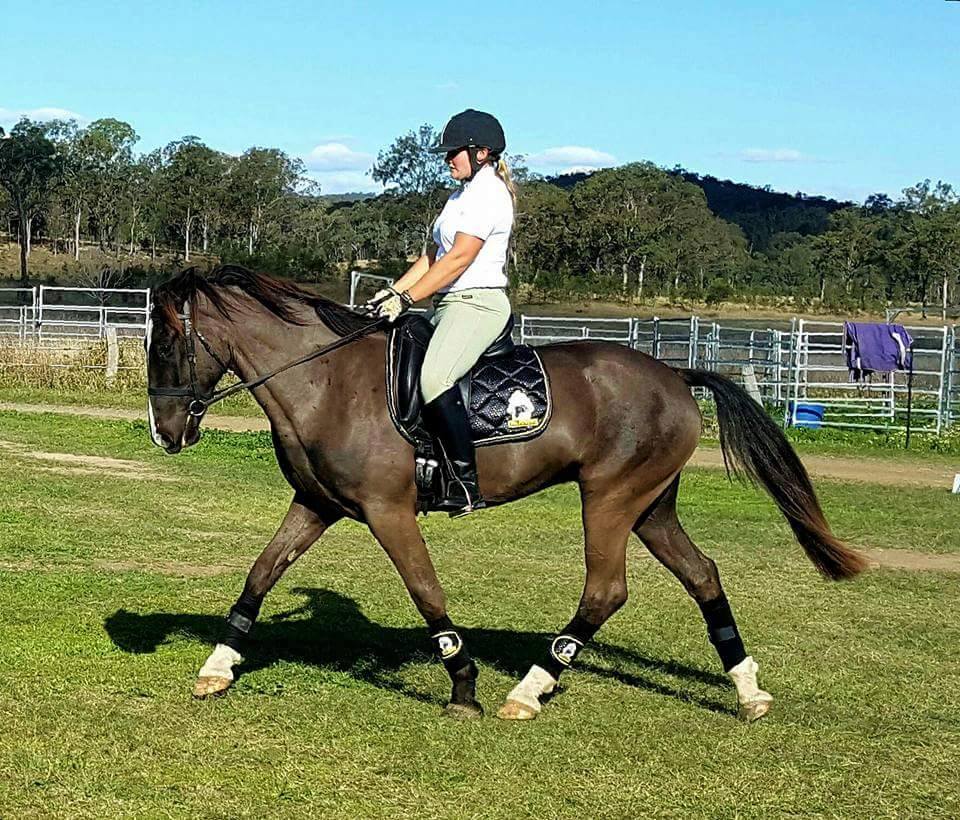
Pinnacle Madiba, under saddle lightly, is rising 3 and pictured in early August 2016. He matured quickly physically due to our excellent foal care, and has matured mentally quickly due to constant and gentle handling. This combination meant that he was a doll to start and there was really no transition from the ground to the saddle. My mother purchased a half share in Madiba as a yearling to prevent him being sold, and he is being retained by our stud for dressage and open hunter classes.
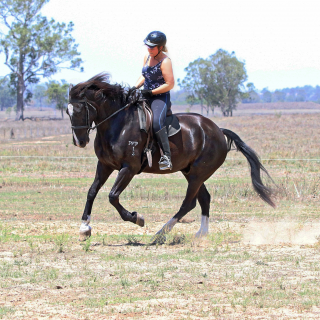
Pinnacle Madiba as an experienced five year old, showing great progress in his training
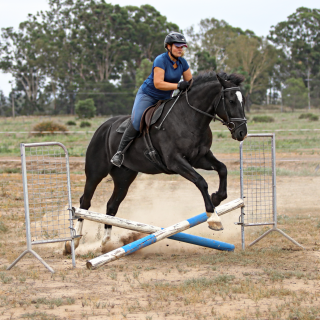
Pinnacle Madiba as a five year old being trained for jumping
Australian Waler Horse Foal Handling
“It is not with the expectation of the foal learning that we start out, the foal initiates the contact and learns because it wants to.”
Foal handling to us is a simple and trust-filled exercise. We believe that it is in the first month that humans can bond with the young foal and so we believe in handling them from a couple of days old onwards. Our expectation is that “you don’t have to learn anything, but I’m just going to show you this, what do you think?” Therefore, the foal is shown the halter and rope at a few days old. It is shown a grooming brush, a turned on clipper.
The foal then out of pure interest will come to us and introduce himself to the new object at their own leisure. Once they do this, then very gently, the foal is handled, and only then is the foal is touched with the object and petted with it. For example, the rope is placed on the foal’s back and it is groomed with the brush. Only once they are comfortable, fully trusting, and initiating contact, is any expectation placed on them.
Slowly the foal is built up to slight increases of handling, but it is only on terms the foal is comfortable with. We have found that if this is done, once they trust you, they come to you willingly and agreeably start learning. But it is not with the expectation of learning that we start out, the foal initiates the contact and learns because it wants to.
We also believe it is important that foals are not over-handled or spoiled. Handling is done just-in-time and no more than necessary, and with a focus on lightness and without overriding the natural spirit of the youngster.
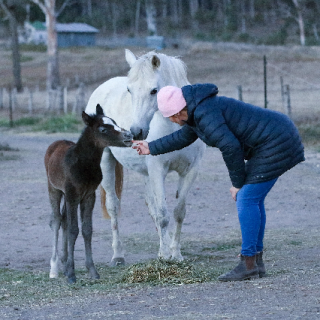
Pinnacle Pepper, a protective mummy, and her day old baby, Pinnacle Hot Chilli


